|
THIS IS THE
HOMEPAGE for documents relating to the
Guardia Nacional de Nicaragua, from
which can be accessed the following:
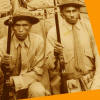 PHOTOGRAPHS
OF THE GUARDIA NACIONAL
— dating from before the "new" Guardia's
founding in May 1927 and continuing through the
1960s & after. Housed mainly in
the first pages of the USMC-GN thematic
collection in the Photo-Docs section of the
website. Also housed in the Photo-Doc
collections of individual repositories,
especially USNA1, USNA2, and MCRC. Most
are in high-resolution (600 dpi). There
are some marvelous photographs here (&
bearing in mind that all these Photo-Doc pages
are still in progress). PHOTOGRAPHS
OF THE GUARDIA NACIONAL
— dating from before the "new" Guardia's
founding in May 1927 and continuing through the
1960s & after. Housed mainly in
the first pages of the USMC-GN thematic
collection in the Photo-Docs section of the
website. Also housed in the Photo-Doc
collections of individual repositories,
especially USNA1, USNA2, and MCRC. Most
are in high-resolution (600 dpi). There
are some marvelous photographs here (&
bearing in mind that all these Photo-Doc pages
are still in progress).
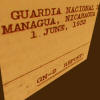 GUARDIA
NACIONAL MISCELLANEOUS DOCUMENTS (M-DOCS),
1925-1934.
An expansive collection culled
from M-Docs, most from
RG127, that shed light on diverse specific aspects of
the Guardia's formation & activities from May
1927 until the Marine withdrawal & afterward.
This is will be the meat of
this website's collection of materials on the
Guardia — a repository for not only military reports
but newspaper stories, consular despatches,
personal letters & diaries, and other types of
evidence
that speak in some fashion to the Guardia's
development, organized
chronologically and with critical introductions
& analyses.
Pages in progress.
GUARDIA
NACIONAL MISCELLANEOUS DOCUMENTS (M-DOCS),
1925-1934.
An expansive collection culled
from M-Docs, most from
RG127, that shed light on diverse specific aspects of
the Guardia's formation & activities from May
1927 until the Marine withdrawal & afterward.
This is will be the meat of
this website's collection of materials on the
Guardia — a repository for not only military reports
but newspaper stories, consular despatches,
personal letters & diaries, and other types of
evidence
that speak in some fashion to the Guardia's
development, organized
chronologically and with critical introductions
& analyses.
Pages in progress.
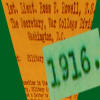 1916
MILITARY MONOGRAPH OF NICARAGUA, FIRST LT. ROSS
E. ROWELL, U.S.M.C. INTELLIGENCE OFFICER.
This 14-page report (PDF file, 9.8 MB) by Marine
Corps Intelligence Officer Lt. Ross E. Rowell
offers a well-researched & authoritative
synopsis of the organization & main
characteristics of the
Conservative-controlled Nicaraguan military
forces during the years of US military
occupation. (In the late 1920s Major
Rowell played played a key role in the air war
against the Sandinistas & their supporters & in
the development of aerial counterinsurgency
doctrine; see the Air War pages.) Housed
on a separate web page and accompanied by maps &
graphics, this
1916 report was commissioned by the War College
Division of the War Department. 1916
MILITARY MONOGRAPH OF NICARAGUA, FIRST LT. ROSS
E. ROWELL, U.S.M.C. INTELLIGENCE OFFICER.
This 14-page report (PDF file, 9.8 MB) by Marine
Corps Intelligence Officer Lt. Ross E. Rowell
offers a well-researched & authoritative
synopsis of the organization & main
characteristics of the
Conservative-controlled Nicaraguan military
forces during the years of US military
occupation. (In the late 1920s Major
Rowell played played a key role in the air war
against the Sandinistas & their supporters & in
the development of aerial counterinsurgency
doctrine; see the Air War pages.) Housed
on a separate web page and accompanied by maps &
graphics, this
1916 report was commissioned by the War College
Division of the War Department.
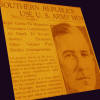 THE
FIRST FAILED GUARDIA
NACIONAL DE NICARAGUA, 1925-1927 UNDER US ARMY
MAJOR C. B. CARTER.
In 1925 the Nicaraguan
government under newly-inaugurated President
Carlos José Solorzano agreed to create the first
incarnation of the Guardia Nacional, headed by a
US Army Major C. B. Carter. The goal was
to develop a non-partisan national army that
would create political order & stability and
permit the US Marines to withdraw from the
country. The effort floudered for a host
of reasons, as seen in the critically
analyzed document collection to be housed here. Pages in progress. THE
FIRST FAILED GUARDIA
NACIONAL DE NICARAGUA, 1925-1927 UNDER US ARMY
MAJOR C. B. CARTER.
In 1925 the Nicaraguan
government under newly-inaugurated President
Carlos José Solorzano agreed to create the first
incarnation of the Guardia Nacional, headed by a
US Army Major C. B. Carter. The goal was
to develop a non-partisan national army that
would create political order & stability and
permit the US Marines to withdraw from the
country. The effort floudered for a host
of reasons, as seen in the critically
analyzed document collection to be housed here. Pages in progress.
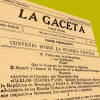 GUARDIA
NACIONAL FOUNDATIONAL DOCUMENT 1:
LA
GACETA, DIARIO OFICIAL, 4 ABRIL 1929.
The full text of the 1927 agreement that created
the Guardia Nacional, published in first five
pages of the official government registry,
La Gaceta, Diario Oficial in April 1929
(PDF, 400 dpi, 20 MB). This is the same text, in
Spanish, as the agreement between the US and
Nicaraguan governments signed on 22 December
1927. This “Convenio Creador de la
Guardia Nacional de Nicaragua” worked its way
through the Nicaraguan legislative process and
was signed into Law on February 21, 1929 and
published in La Gaceta on April 4. GUARDIA
NACIONAL FOUNDATIONAL DOCUMENT 1:
LA
GACETA, DIARIO OFICIAL, 4 ABRIL 1929.
The full text of the 1927 agreement that created
the Guardia Nacional, published in first five
pages of the official government registry,
La Gaceta, Diario Oficial in April 1929
(PDF, 400 dpi, 20 MB). This is the same text, in
Spanish, as the agreement between the US and
Nicaraguan governments signed on 22 December
1927. This “Convenio Creador de la
Guardia Nacional de Nicaragua” worked its way
through the Nicaraguan legislative process and
was signed into Law on February 21, 1929 and
published in La Gaceta on April 4.
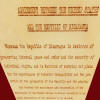 GUARDIA
NACIONAL FOUNDATIONAL DOCUMENT 2:
AGREEMENT BETWEEN THE UNITED STATES AND THE
REPUBLIC OF NICARAGUA, CREATING THE GUARDIA
NACIONAL, SIGNED DECEMBER 22, 1927.
Copy of the agreement above, in
English (PDF, 400 dpi, 18 MB).
Signatories are US Minister Dana G. Munro and
Nicaraguan Foreign Minister Carlos Cuadra Pasos,
but the author was clearly the US State
Department, probably Henry Stimson, in
consultation with the US Marine Corps & others. Total number of
troops in the initial agreement: 1,229.
Number of enlisted men: 1,064. Total
first-year budget: $689,132.00.
Members of the Band: 37. The
preample is especially noteworthy for its
liberal-capitalist assumptions, terms & phrases,
conceptual categories & discursive features. GUARDIA
NACIONAL FOUNDATIONAL DOCUMENT 2:
AGREEMENT BETWEEN THE UNITED STATES AND THE
REPUBLIC OF NICARAGUA, CREATING THE GUARDIA
NACIONAL, SIGNED DECEMBER 22, 1927.
Copy of the agreement above, in
English (PDF, 400 dpi, 18 MB).
Signatories are US Minister Dana G. Munro and
Nicaraguan Foreign Minister Carlos Cuadra Pasos,
but the author was clearly the US State
Department, probably Henry Stimson, in
consultation with the US Marine Corps & others. Total number of
troops in the initial agreement: 1,229.
Number of enlisted men: 1,064. Total
first-year budget: $689,132.00.
Members of the Band: 37. The
preample is especially noteworthy for its
liberal-capitalist assumptions, terms & phrases,
conceptual categories & discursive features.
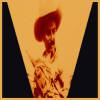 LOS
VOLUNTARIOS: A FAILED COUNTERINSURGENCY
EXPERIMENT OF THE US MARINES & GUARDIA NACIONAL,
JANUARY-JUNE 1929.
Four webpages housing 96 documents in 137 JPEG
files on the Voluntarios, with critical
introductions and interpretive comments, and all
known photographs of Voluntario troops &
chieftains (13 photos with interpretive captions housed in Photo-Docs >
USMC-GN > Page 7: Voluntarios).
Collection includes intelligence reports, patrol
& combat reports, citizens' complaints,
property-owners petitions, telegrams, letters,
newspaper articles, and more. Linked to
pages housing related document collections in the Top
100, PC-Docs, and elsewhere. LOS
VOLUNTARIOS: A FAILED COUNTERINSURGENCY
EXPERIMENT OF THE US MARINES & GUARDIA NACIONAL,
JANUARY-JUNE 1929.
Four webpages housing 96 documents in 137 JPEG
files on the Voluntarios, with critical
introductions and interpretive comments, and all
known photographs of Voluntario troops &
chieftains (13 photos with interpretive captions housed in Photo-Docs >
USMC-GN > Page 7: Voluntarios).
Collection includes intelligence reports, patrol
& combat reports, citizens' complaints,
property-owners petitions, telegrams, letters,
newspaper articles, and more. Linked to
pages housing related document collections in the Top
100, PC-Docs, and elsewhere.
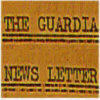 guardia Newsletters.
74 in total, nos. 46-87 and
98-131 (1931-32), comprising over 1,400 pages of text
— issued every 7-14 days, more or less, and
usually overlapping with the previous & next
7-14 day period, for most of the 20 months from
30 April 1931 to 23 December 1932. Simple,
unadorned, and formulaic, the newsletters offer
a wealth of information on various aspects of
the Guardia's activities, including movements of
units & patrols, exemplary or especially
interesting patrol, combat & intelligence
reports, and other odds & ends. Some
combat reports that don't appear elsewhere
appear in these pages. The Marines & State
Dept. probably hoped that after the US
withdrawal, the "newsletter" would be revamped by whomever took over the
directorship of the Guardia Nacional. As
we see below, it
was. guardia Newsletters.
74 in total, nos. 46-87 and
98-131 (1931-32), comprising over 1,400 pages of text
— issued every 7-14 days, more or less, and
usually overlapping with the previous & next
7-14 day period, for most of the 20 months from
30 April 1931 to 23 December 1932. Simple,
unadorned, and formulaic, the newsletters offer
a wealth of information on various aspects of
the Guardia's activities, including movements of
units & patrols, exemplary or especially
interesting patrol, combat & intelligence
reports, and other odds & ends. Some
combat reports that don't appear elsewhere
appear in these pages. The Marines & State
Dept. probably hoped that after the US
withdrawal, the "newsletter" would be revamped by whomever took over the
directorship of the Guardia Nacional. As
we see below, it
was.
.jpg) GUARDIA
NACIONAL: Boletín del Ejército de
Nicaragua (BULLETIN OF THE
NICARAGUAN ARMY) —
Successor to the "Guardia Newsletters,"
produced by the Guardia Nacional & its Jefe
Director Anastasio Somoza García after the US
withdrawal in January 1933. Much higher
production values than the Newsletters, still
stapled but typeset & printed, with a
cover (off-white with blue letters), table of contents, photographs, reprinted articles
taken from newspapers, and an increasing number
of short pieces commissioned
specifically for the boletines. An
incomplete set for 17 month, starting in June
1933 & ending in December 1935.
A fascinating source that offers a compelling
illustration of how Somoza turned the Guardia
into his own private army. GUARDIA
NACIONAL: Boletín del Ejército de
Nicaragua (BULLETIN OF THE
NICARAGUAN ARMY) —
Successor to the "Guardia Newsletters,"
produced by the Guardia Nacional & its Jefe
Director Anastasio Somoza García after the US
withdrawal in January 1933. Much higher
production values than the Newsletters, still
stapled but typeset & printed, with a
cover (off-white with blue letters), table of contents, photographs, reprinted articles
taken from newspapers, and an increasing number
of short pieces commissioned
specifically for the boletines. An
incomplete set for 17 month, starting in June
1933 & ending in December 1935.
A fascinating source that offers a compelling
illustration of how Somoza turned the Guardia
into his own private army.
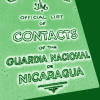 The Official List of Contacts of the Guardia
Nacional de Nicaragua".
A compilation of 510
military contacts — with a "contact" defined
as a military encounter between opposing ground
forces in which both sides discharged firearms —
from 16 July 1927 to 31 December 1932,
enumerating a total of 197 Guardia casualties (75
killed, 122 wounded), 1,641 EDSN casualties
(1,115 killed & 526 wounded). By my count,
the actual number of contacts, determined by
combing through the patrol & combat reports, was
closer to 735. This 34 MB PDF file
provided via the kind courtesy of the Marine
Corps Research Center, Quantico, VA. The Official List of Contacts of the Guardia
Nacional de Nicaragua".
A compilation of 510
military contacts — with a "contact" defined
as a military encounter between opposing ground
forces in which both sides discharged firearms —
from 16 July 1927 to 31 December 1932,
enumerating a total of 197 Guardia casualties (75
killed, 122 wounded), 1,641 EDSN casualties
(1,115 killed & 526 wounded). By my count,
the actual number of contacts, determined by
combing through the patrol & combat reports, was
closer to 735. This 34 MB PDF file
provided via the kind courtesy of the Marine
Corps Research Center, Quantico, VA.
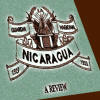 Julian C. Smith, et
al., "A Review of the Organizations & Operations
of the Guardia Nacional de Nicaragua
(1927-1933)".
33 MB PDF file, 516 pgs. The complete unpublished manuscript
from the Marine
Corps Research Center, 1933. An invaluable
source of information on many aspect of the
Guardia's institutional history. Hard-copies
available on eBay for around $60. Julian C. Smith, et
al., "A Review of the Organizations & Operations
of the Guardia Nacional de Nicaragua
(1927-1933)".
33 MB PDF file, 516 pgs. The complete unpublished manuscript
from the Marine
Corps Research Center, 1933. An invaluable
source of information on many aspect of the
Guardia's institutional history. Hard-copies
available on eBay for around $60.
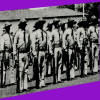 "The Nicaraguan National Military Academy" (CHAP.
XIII), excerpted from Julian C. Smith, et al.,
"A Review of the Organizations & Operations of
the Guardia Nacional,"
pp. 102-106.
A concise & informative summary of the early
development of the National Military Academy in
Managua from its founding April 1930 — the
institution most responsible for populating the
officer corps and governing the Guardia's growth
& expansion — excerpted here for convenient
reference. Photo at left a detail of an
inspection at the National Military Academy in
1932 — see the Photo-Docs > Marines-GN pages.
"The Nicaraguan National Military Academy" (CHAP.
XIII), excerpted from Julian C. Smith, et al.,
"A Review of the Organizations & Operations of
the Guardia Nacional,"
pp. 102-106.
A concise & informative summary of the early
development of the National Military Academy in
Managua from its founding April 1930 — the
institution most responsible for populating the
officer corps and governing the Guardia's growth
& expansion — excerpted here for convenient
reference. Photo at left a detail of an
inspection at the National Military Academy in
1932 — see the Photo-Docs > Marines-GN pages.
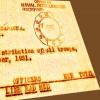 Guardia Troop Distribution tables & Figures.
Covers the 13 months from
December 1931 to December 1932, in 13 PDF files in 256 pages.
These serial lists provide much valuable
information about the asymmetric geographic
distribution of the military arm of the
Nicaraguan state during the Guardia Nacional's
most dynamic and formative period.
Accompanied by a detailed map (using the 1934 US
Army map as a basemap) showing the spatial
distribution of GN posts in the Northern &
Central Areas in December 1932. PDF
files provided via the kind courtesy of the
Marine Corps Research Center, Quantico, VA. Guardia Troop Distribution tables & Figures.
Covers the 13 months from
December 1931 to December 1932, in 13 PDF files in 256 pages.
These serial lists provide much valuable
information about the asymmetric geographic
distribution of the military arm of the
Nicaraguan state during the Guardia Nacional's
most dynamic and formative period.
Accompanied by a detailed map (using the 1934 US
Army map as a basemap) showing the spatial
distribution of GN posts in the Northern &
Central Areas in December 1932. PDF
files provided via the kind courtesy of the
Marine Corps Research Center, Quantico, VA.
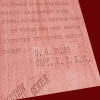 captain G. R. Weeks, U.S.M.C., "The
Summary of the Organization, Training and
Operations of the Guardia Nacional de Nicaragua
Troops of the Central Area under American
Supervision, with Critical Analysis Thereof."
Marine Corps Schools, Marine Barracks,
Quantico, VA, May 1940. Links directly to
a PDF file of 14 pages, again via the kind
courtesy of the Marine Corps Research Center,
Quantico, VA. captain G. R. Weeks, U.S.M.C., "The
Summary of the Organization, Training and
Operations of the Guardia Nacional de Nicaragua
Troops of the Central Area under American
Supervision, with Critical Analysis Thereof."
Marine Corps Schools, Marine Barracks,
Quantico, VA, May 1940. Links directly to
a PDF file of 14 pages, again via the kind
courtesy of the Marine Corps Research Center,
Quantico, VA.
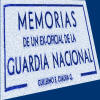 GUILLERMO E. CUADRA G., "MEMORIAS DE UN
EX-OFICIAL DE LA GUARDIA NACIONAL" (REVISTA
CONSERVADORA, ENERO-MARZO 1962).
A powerful indictment of the personalism &
corruption that came to dominate the Guardia
under the Somozas after the US withdrawal,
covering many specific episodes and written in
clear, compelling prose.
Links directly to the PDF file. See also the spy report by Cuadra,
TOP 100
PAGE 82. GUILLERMO E. CUADRA G., "MEMORIAS DE UN
EX-OFICIAL DE LA GUARDIA NACIONAL" (REVISTA
CONSERVADORA, ENERO-MARZO 1962).
A powerful indictment of the personalism &
corruption that came to dominate the Guardia
under the Somozas after the US withdrawal,
covering many specific episodes and written in
clear, compelling prose.
Links directly to the PDF file. See also the spy report by Cuadra,
TOP 100
PAGE 82.
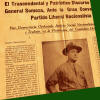 ANASTASIO
SOMOZA GARCÍA PROPAGANDA SHEET: "EL
TRANSCENDENTAL Y PATRIÓTICO DISCURSO DEL MAYOR
GENERAL SOMOZA, ANTE LA GRAN CONVENCIÓN DEL
PARTIDO LIBERAL NACIONALISTA" (JUNIO 1936).
A classic expression of Somocista
populist-nationalist ideology, issued at a
crucial historical juncture, just as he was
wresting
power from the constitutionally elected
president Juan B. Sacasa and
poised to be nominated for president by the
newly-formed Partido Liberal Nacionalista. The backside was scanned in two pieces, the
first containing the conclusion of Somoza's
"discurso," and the second with handwriting at
the bottom (in English) by US State Dept
functionaries dated July & August 1936.
The top backside with the remainder of the text is accessible
HERE, and the State Dept.
notes on the bottom
HERE. (Three JPEG
files, 8-11 MB each.) ANASTASIO
SOMOZA GARCÍA PROPAGANDA SHEET: "EL
TRANSCENDENTAL Y PATRIÓTICO DISCURSO DEL MAYOR
GENERAL SOMOZA, ANTE LA GRAN CONVENCIÓN DEL
PARTIDO LIBERAL NACIONALISTA" (JUNIO 1936).
A classic expression of Somocista
populist-nationalist ideology, issued at a
crucial historical juncture, just as he was
wresting
power from the constitutionally elected
president Juan B. Sacasa and
poised to be nominated for president by the
newly-formed Partido Liberal Nacionalista. The backside was scanned in two pieces, the
first containing the conclusion of Somoza's
"discurso," and the second with handwriting at
the bottom (in English) by US State Dept
functionaries dated July & August 1936.
The top backside with the remainder of the text is accessible
HERE, and the State Dept.
notes on the bottom
HERE. (Three JPEG
files, 8-11 MB each.)
 RECOLECCIÓN
HISTÓRICA SOBRE HECHOS DE LA GUARDIA NACIONAL DE
NICARAGUA, POR JOSÉ WENCESLAO MAYORGA D., TNTE.
CNEL. EX GN, 2011.
Unpublished manuscript by a former Lt. Colonel
in the Guardia Nacional who enlisted in the
Guardia in 1954, at 16 years of age, and served
more than 20 years, most in the Judicial Branch
(Cuerpo de Leyes). Some valuable
historical information here, with the names &
ranks of some of the key players in the Guardia
in the postwar years and data on the revamping
of the Military Academy in the late 1930s.
Manuscript reproduced here via the kind courtesy
of Sr. José Wenceslao Mayorga D. RECOLECCIÓN
HISTÓRICA SOBRE HECHOS DE LA GUARDIA NACIONAL DE
NICARAGUA, POR JOSÉ WENCESLAO MAYORGA D., TNTE.
CNEL. EX GN, 2011.
Unpublished manuscript by a former Lt. Colonel
in the Guardia Nacional who enlisted in the
Guardia in 1954, at 16 years of age, and served
more than 20 years, most in the Judicial Branch
(Cuerpo de Leyes). Some valuable
historical information here, with the names &
ranks of some of the key players in the Guardia
in the postwar years and data on the revamping
of the Military Academy in the late 1930s.
Manuscript reproduced here via the kind courtesy
of Sr. José Wenceslao Mayorga D.
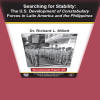 RICHARD
L. MILLETT,
SEARCHING FOR STABILITY: THE
U.S. DEVELOPMENT OF CONSTABULARY FORCES IN LATIN
AMERICA & THE PHILIPPINES. OCCASIONAL
PAPER 30, COMBAT STUDIES INSTITUTE, US ARMY
COMBINED ARMS CENTER, FORT LEAVENWORTH, KANSAS
(2010). Chapter
7 of this manuscript offers a detailed,
authoritative & lucid account of the creation &
formation of the Guardia Nacional de Nicaragua
by the author of the 1977 classic, Guardians
of the Dynasty (Maryknoll NY: Orbis Books)
— which remains the best account, in English or
Spanish, of the institutional history of the
Guardia Nacional de Nicaragua. We
acknowledge the kind permission of the Combat
Studies Institute to publish this manuscript
here. (PDF file, 1.7 MB) RICHARD
L. MILLETT,
SEARCHING FOR STABILITY: THE
U.S. DEVELOPMENT OF CONSTABULARY FORCES IN LATIN
AMERICA & THE PHILIPPINES. OCCASIONAL
PAPER 30, COMBAT STUDIES INSTITUTE, US ARMY
COMBINED ARMS CENTER, FORT LEAVENWORTH, KANSAS
(2010). Chapter
7 of this manuscript offers a detailed,
authoritative & lucid account of the creation &
formation of the Guardia Nacional de Nicaragua
by the author of the 1977 classic, Guardians
of the Dynasty (Maryknoll NY: Orbis Books)
— which remains the best account, in English or
Spanish, of the institutional history of the
Guardia Nacional de Nicaragua. We
acknowledge the kind permission of the Combat
Studies Institute to publish this manuscript
here. (PDF file, 1.7 MB)
-JuanTorresGN588-7Mar1928B.jpg) Forthcoming soon: Forthcoming soon:
— Excerpts from Francisco Gaitan's
unpublished multi-volume chronicle of the
history of the Guardia Nacional, similar to but
different than Smith, et al., above.
— Critiques of the
Guardia in the Nicaraguan press,
pamphlets, and other texts, including a series
of articles by Solomón de la Selva in the
Managua daily La Tribuna in 1929.
— A compendium of
Sandino's views of the Guardia
Nacional.
— and more. (right:
Guardia Nacional corporal Juan Torres, #588,
March 1928, US National Archives)
JEFE DIRECTORS OF THE
GUARDIA NACIONAL DE NICARAGUA
| Lt. Col. Robert Y. Rhea |
Brig. Gen. GN |
12 May—29 June 1927 |
| Maj. Harold C. Pierce |
Maj. GN |
30 June—10 July 1927 |
| Lt. Col. Elias R. Beadle |
Brig. Gen. GN |
11 July 1927—10 March 1929 |
| Col. Douglas C. McDougal |
Maj. Gen. GN |
11 March 1929—5 Feb. 1931 |
| Lt. Col. Calvin B. Matthews |
Maj. Gen. GN |
6 Feb. 1931—1 Jan. 1933 |
| Gen. Anastasio Somoza García |
General |
2 Jan. 1933—assassination in
1956 |
COMMANDERS OF THE
SECOND BRIGADE, U.S. MARINE CORPS
| Brig. Gen. Logan Feland |
February 21, 1927—August
23, 1927 |
| Col. Louis M. Gulick |
August 24, 1927—January
15, 1928 |
| Brig. Gen. Logan Feland |
January 16, 1928—March
26, 1929 |
| Brig. Gen. Dion Williams |
April 18, 1929—June 4,
1930 |
| Brig. Gen. Frederic L.
Bradman |
June 26, 1930—November
26, 1931 |
| Brig. Gen. Randolph C.
Berkeley |
November 25,
1931—January 2, 1933 |
Source: Maizie
Johnson, comp., "Records of the United States
Marine Corps, National Archives Inventory Record
Group 127," National Archives & Records
Administration, Washington D.C., 1970, pp.
43-44.

Anastasio Somoza
García (centro de la primera fila) en Jinotega,
Mayo de 1934.
Sentados de izquierda a
derecha en primera fila: Hugo
Reese (un alemán casado con Bertha
Adam), Luis Amado Pastora (?),
Eusebio Rizo, Gral.
Anastasio "Tacho"
Somoza García, Gral. Rigoberto Reyes,
Francisco Rosales,
Isidro León York, único de pie
agarrándose las manos: Gilberto Morales.
Primera fila de pie, de izquierda a derecha:
Celestino Cantarero, después de
dos militares, Humberto Torrez Molina
(de camisa blanco), Cuto Fajardo
(?), Dr. Edmundo López Pineda (papá de la Dora
y Marina), Dr. Luis Manuel Debayle,
Antonio López (padre del Dr.
Federico López). Ultima fila de izquierda
a derecha: desconocidos los primeros
siete, después, chaparrito: José María
Meneses, Justiniano Blandón
(?), Zacarías Malespín (de
Granada?), Dr. Ernesto Vaca Torres
(con las manos sobre los hombros del Dr. López),
Braulio Torres (le decían “nuca
panda”, véase la posición de la nuca) y el de
corbatin, Gregorio Gutierrez de
San Rafael del Norte. El resto no se ha
podido identificar. Ver el artículo del
Boletín de la Guardia Nacional de Mayo
1934, pp. 6-8. Según Arturo
Castro-Frenzel, este foto fue tomado durante
esta gira triunfal de Gral. Somoza.
Photograph, caption, and verification of venue
via the kind courtesy of Arturo Castro-Frenzel.
|

